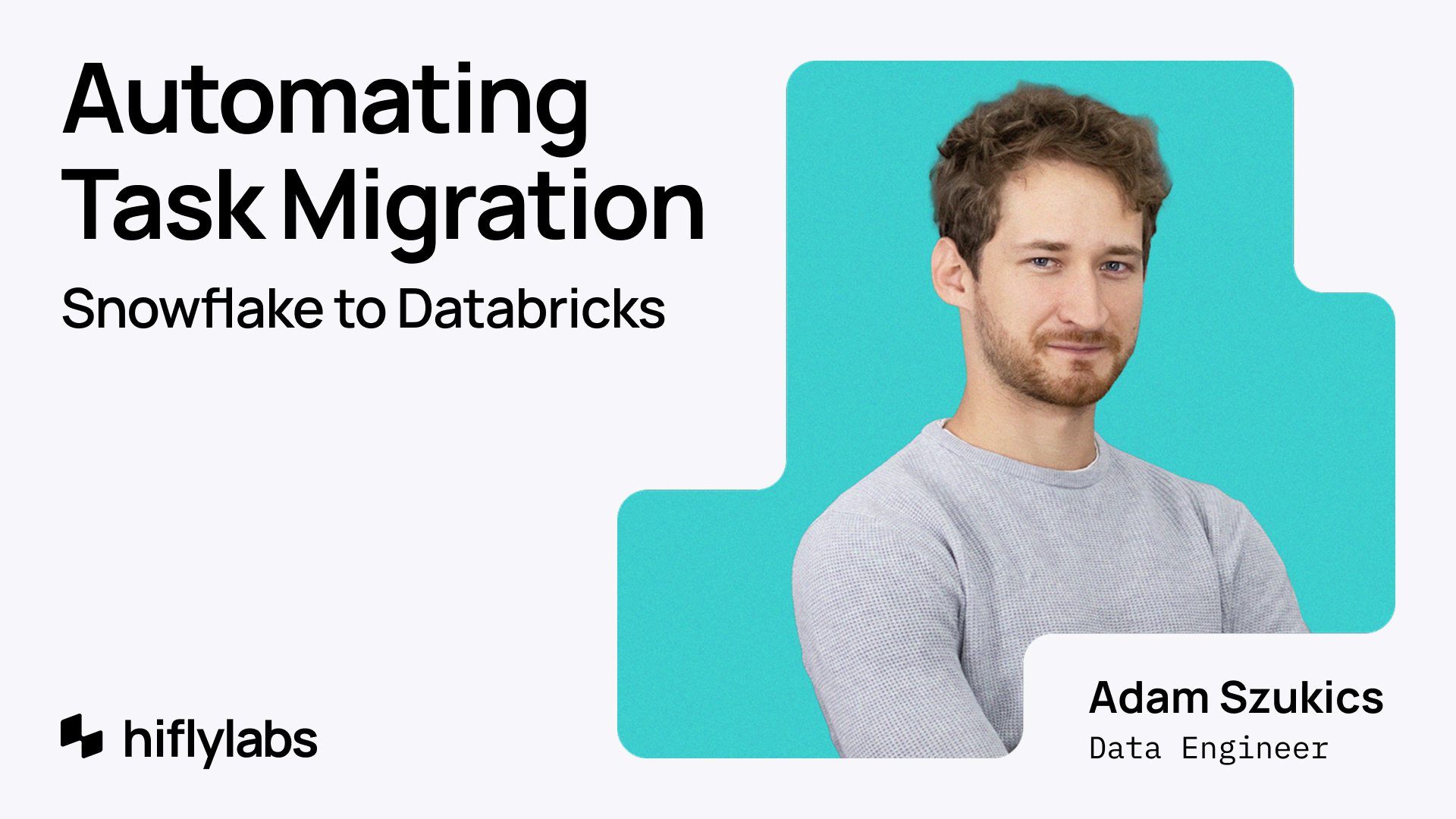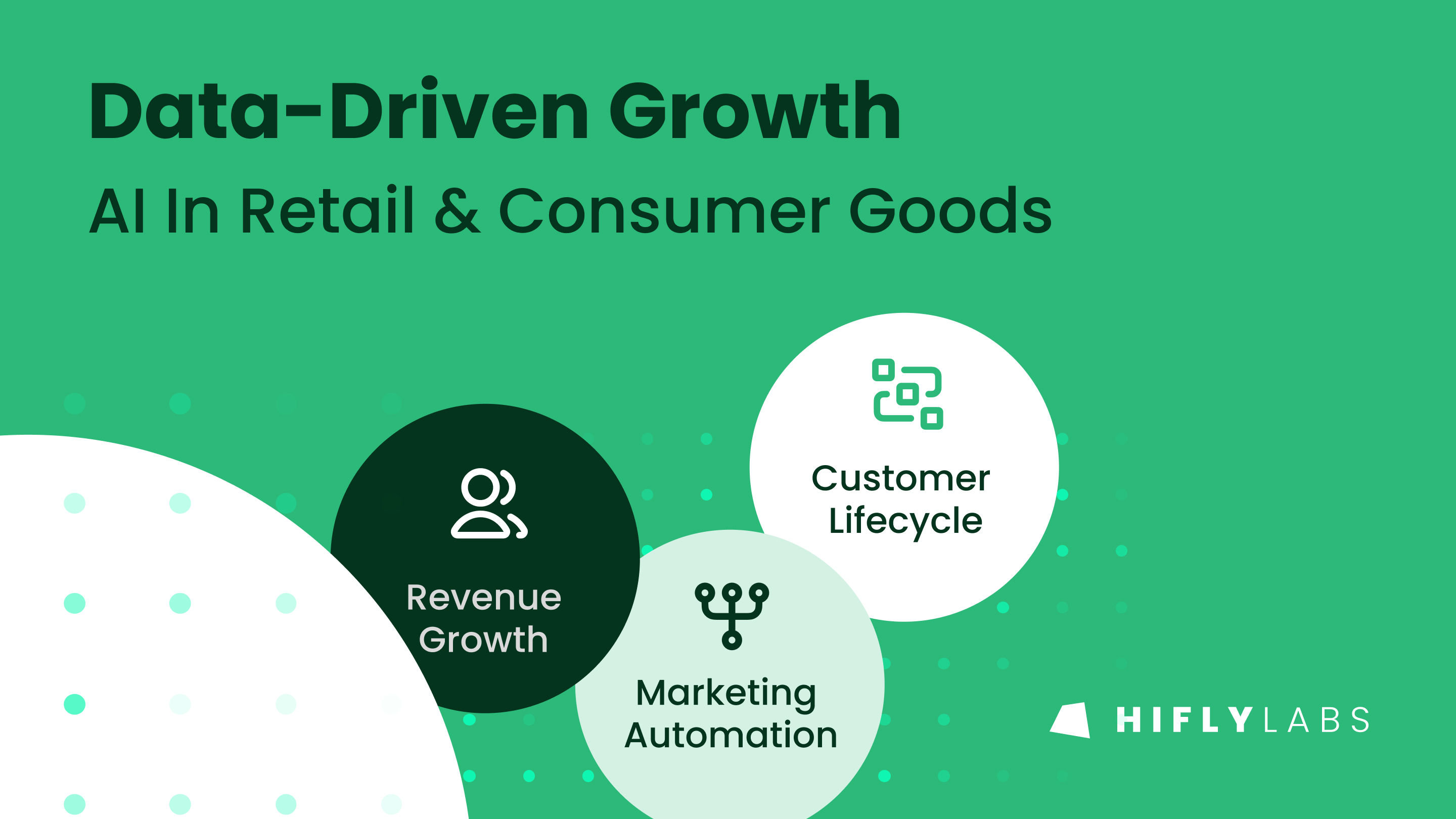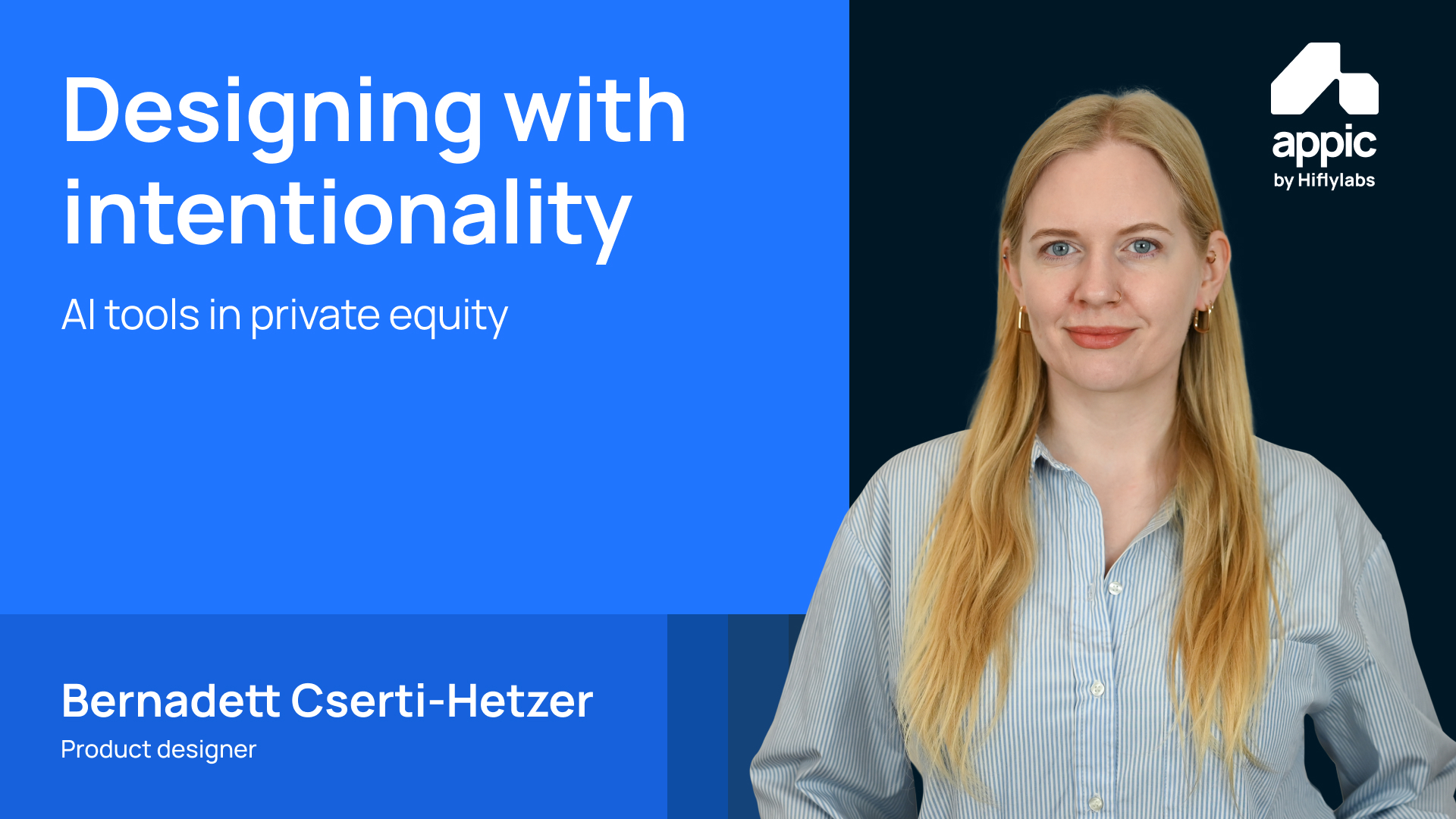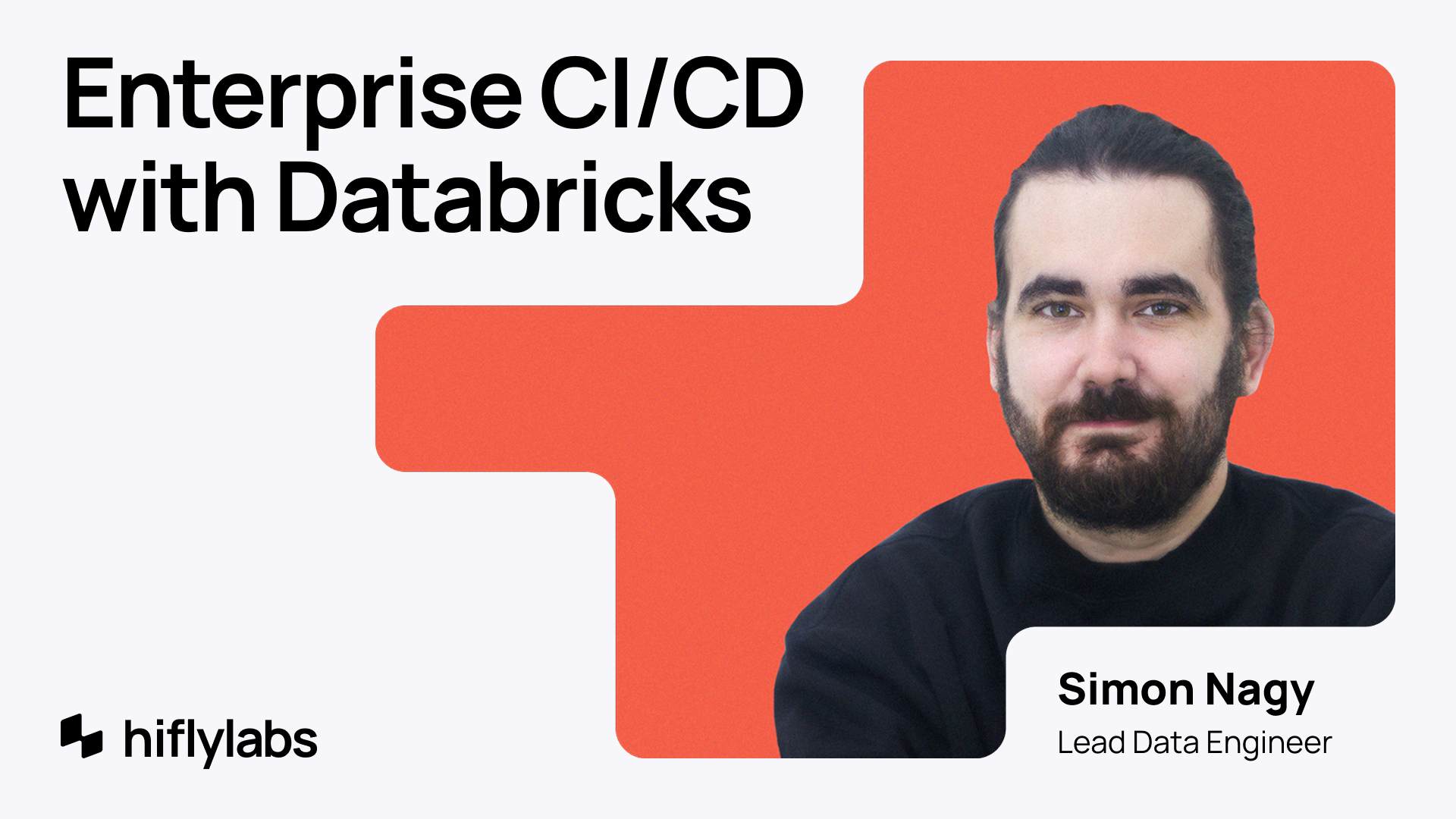Picture this: Your quarterly numbers just came in. Sales volume looks good, but profits aren't following.
Some promotions drive huge spikes in sales, but you can't tell if they're actually making money. And your best customers? A few of them have quietly disappeared.
Most consumer goods companies face these same challenges. The difference between good and great performance often comes down to how well you can answer three simple questions:
- Do you know exactly which products make you money? (Not revenue—real profit.)
- Can you spot unhappy customers before they leave?
- Do your promotions drive actual incremental sales?
The Real Cost of Guesswork
"That's how we've always done it" might be the most expensive sentence in business.
"40% of CPG trade promotion spending doesn’t drive the desired results.”
– Nielsen Holdings
“Nearly 30,000 new products are introduced each year, and 95% of them fail.”
– MIT
Most companies can't predict customer churn until it's too late, either.
But you probably already have the data you need to fix these problems. Your customers leave digital footprints everywhere they go. Your sales systems track every transaction. Your promotion results are all there in your numbers.
The challenge isn't getting more data. It's using the data you have more intelligently.
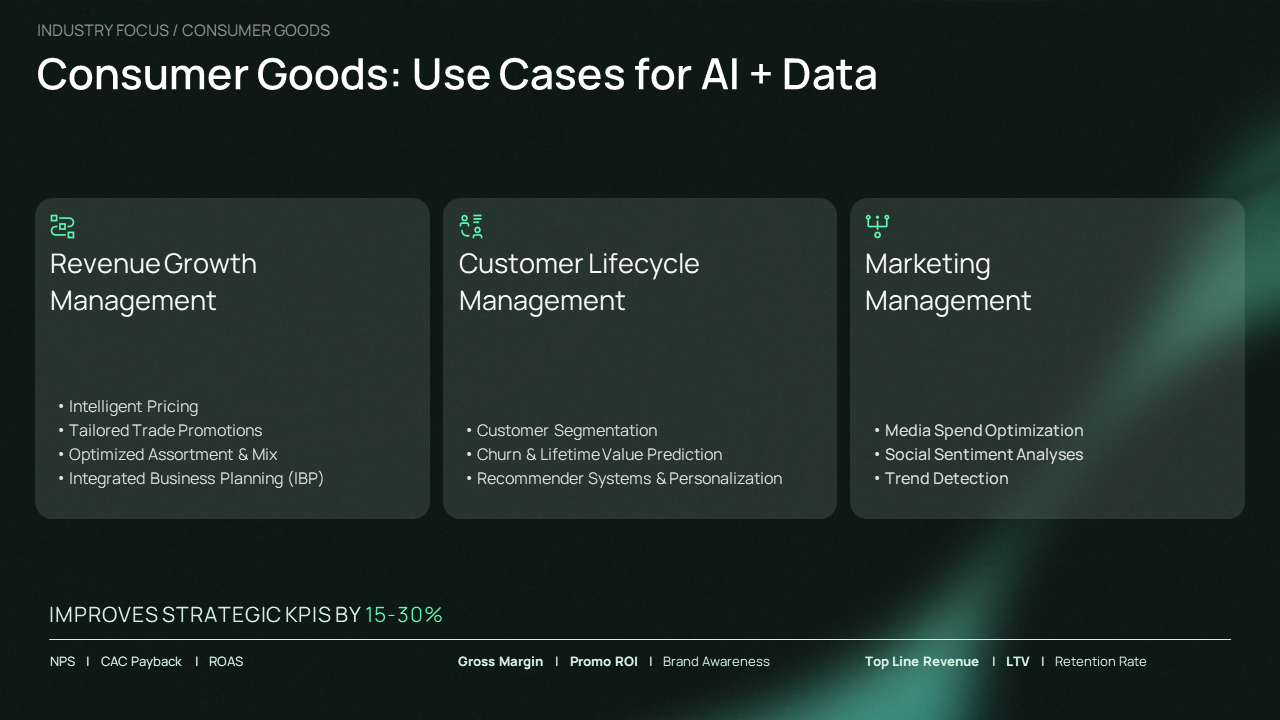
Modern AI tools make this easier than ever before. Tools that used to cost millions and require huge teams are now accessible to mid-sized companies. The results speak for themselves:
- 15-30% top-line revenue growth
- 5-15% margin improvement
- Up to 50% reduction in operating costs
These aren't just numbers from tech giants. They're results from regular retail companies that built data platforms and learned to use their data better.
In the following sections, we'll show you how they did it, starting with the foundations of smart revenue management and moving through customer retention to practical implementation steps. Each section includes real examples and concrete steps you can take right now.
What Smart Revenue Management Actually Looks Like
A small change in how you handle pricing or promotions can have huge effects on your bottom line. Just ask Cirkul. When they needed to scale up their operations for nationwide retail, they faced a common challenge: their systems couldn't keep up with their growth.
The old way of doing things—fragmented data sources, spreadsheets, and "last year plus 5%"—wasn't cutting it anymore. They needed something better. Through modernizing their data operations, they cut costs in half while improving service levels.
Beyond Pricing by Gut Feel
Most companies set prices in one of two ways: cost-plus markup or matching competitors. Both methods leave money on the table.
“Pricing right is the fastest and most effective way for managers to increase profits.”
– McKinsey & Co
Take what happened with another client—MOL Group, a European oil company. Their gas stations’ retail lineup seemed properly priced on paper. Their standard markup matched the market. But when they dug into the data, they found something interesting: in some regions, they were actually pricing themselves out of the market. In others, they were practically giving money away.
Dynamic pricing is about finding the right price for each product in each market at any given time. When the retail division got this right, their profit margins immediately jumped 3.8% without losing any market share.
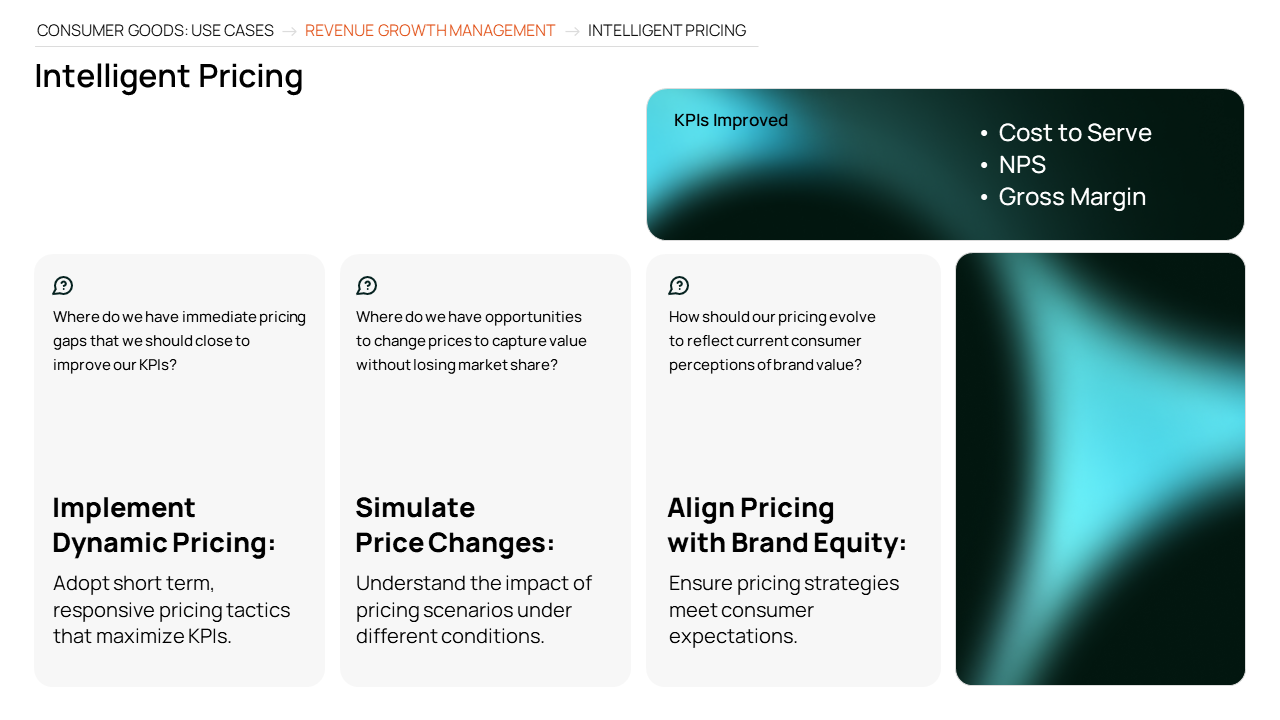
Where do we have opportunities to change prices to capture value without losing market share?
By analyzing patterns in customer behavior, you’ll be able to anticipate demand shifts, foresee structural changes in consumption, and adapt supply chain operations in advance.
This will help you optimize inventory and logistics, aligning shipments with actual demand to avoid both stockouts and redundancies.
“AI-driven IBP can result in a 2 to 4 percentage point annual increase in revenues, a 2 to 3 percentage point decrease in costs, and a 15% to 30% reduction in inventories.”
– BCG
Synchronizing demand with supply, anticipating disruptions, and optimizing assortment and inventory in real-time while aligning with promotions and pricing strategies—this is beyond human capacity. That’s where AI steps in.
Making Promotions Actually Pay
Trade promotions often eat up 30% of revenue. That's a lot of money to spend without knowing what works. As a client put it: "I know half my promotion budget is wasted. I just don't know which half."
But you can know.
Modern tools can tell you:
- Which customers actually change their behavior
- What's the true lift versus regular sales
- How each promotion affects other products
Keeping Your Best Customers
Want to hear something scary?
“5 percent increase in customer retention can lead to an increase in profits of between 25 and 95 percent.”
– Harvard Business School
25% to 95%. That's not a typo. Small changes in how many customers stick around can almost double your profits.
Yet most companies don't know a customer has left until they're long gone. They look at last month's numbers and wonder what happened.
By then, it's too late.
Learn From The Churn
A large drugstore chain we worked with faced exactly this challenge. With millions of loyalty program members, they couldn't tell which ones were about to leave. What we discovered changed how they treated customer retention going forward.
The warning signs weren't what anyone expected. The strongest predictors of churn in their case?
Time since registration.
Second strongest?
Changes in how customers used coupons.
Third?
Time of last purchase.
Simple stuff, right? But nobody was watching these signals. Once they started paying attention, they could spot trouble months in advance. Their early intervention program kept 70% of at-risk customers who would have otherwise left.
A small group of customers—about 8% of their base—drove 40% of their profits. But here's the twist: they weren't the biggest spenders. They were the most consistent buyers who rarely needed discounts.
This insight changed their whole approach to promotions. Instead of blanket discounts, they started looking at individual purchase patterns. They discovered:
Some customers needed price incentives to stay loyal. Others cared more about early access to new products. Many just wanted consistent availability of their favorite items.
By matching their approach to each group, they cut promotion costs by 30% while improving retention by 25%. They weren't spending less—they were spending smarter.
Making It Personal (Without Being Creepy)
The goal isn't to know everything about your customers. It's to know the right things at the right time. Remember Cirkul's journey? When they standardized their data operations, they could finally see patterns they'd missed before.
A customer who used to buy every week suddenly switches to every other week. Their usual order size drops. They start buying different products. Each change might mean nothing on its own. Together, they tell a story.
Modern tools can watch for these patterns automatically:
- Flag behavior changes early
- Suggest the best way to respond
- Track whether interventions work
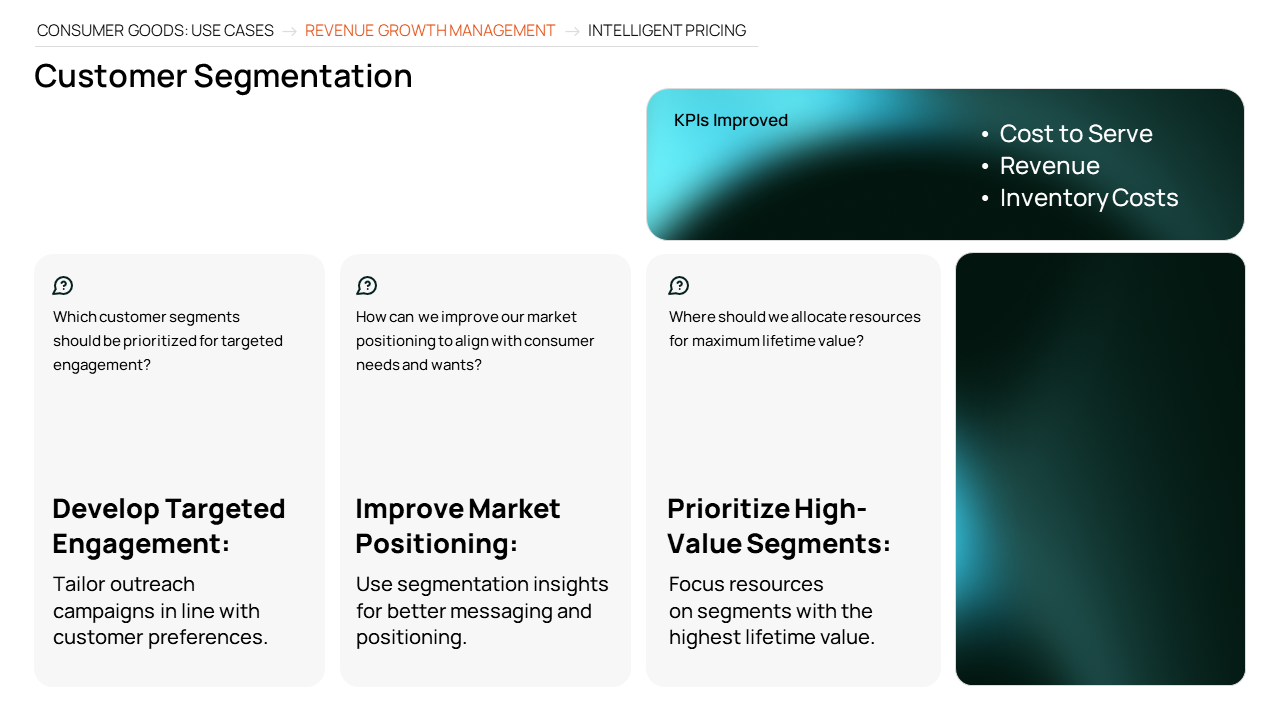
“Organizations that leverage customer behavioral insights outperform peers by 85 percent in sales growth and more than 25 percent in gross margin.”
– McKinsey & Co
Consumer needs, wants, and habits—all hidden in vast data. With the right AI, this data transforms into powerful marketing insights.
The Human Touch Still Matters
But here's something crucial: AI doesn't replace human judgment. It makes it better. Your team's experience and instincts still matter. They just get better data to work with.
Like a good assistant. It handles the routine monitoring, spots potential issues, and brings them to your attention. Your team can then focus on what humans do best: understanding context, making judgment calls, and building relationships.
Next, we'll look at how to put all this into practice—starting with quick wins you can achieve in your first 90 days.
Making It Work
The biggest mistake companies make? Trying to change everything at once. Smart people start small but think big. Let's look at how to do this right.
Your First 90 Days
Still remember Cirkul's transformation? They didn't overhaul everything overnight. They started with one clear problem: their operations couldn't keep up with growth while running on scattered data. By focusing on unifying their data sources in a single platform first, they built momentum for bigger changes.
Start by finding your own quick wins.
Your first month should focus on one area where:
- You're clearly losing money or time
- You have data to work with
- Success is easy to measure
For many companies, pricing is a good place to start. Simply looking for obvious pricing gaps. In weeks, you’ll likely find pricing problems in at least 10% of your SKUs. Fixing those alone generates enough extra profit to fund an entire digital transformation.
Building Momentum
Once you have your first win, people get interested. That's when you can tackle bigger challenges. The drugstore chain we mentioned earlier started with basic churn prediction. When that worked, they expanded to personalized retention programs. Each success made the next one easier.
Ready to begin? Here's what to do tomorrow:
1. Look at your last quarterly report. Find one number you wish was better. Get your data in order. You probably have most of what you need. It just needs organizing. Don't wait for perfect data. Start with what you have.
2. Ask your team where they spend most of their time. That's usually where automation helps most. Add simple predictions. Which products might run out? Which customers might leave? Which promotions might work best?
3. Pick the simplest problem first. Pick one thing. Automate routine decisions. Let humans focus on exceptions and strategy. Get it right. Get a quick win. Move to the next. Build from there. Show results early and often. Make wins visible. This approach avoids getting boggled down by too much change, while encouraging buy-in.
4. Measure success. Scale up solutions that made the most impact.
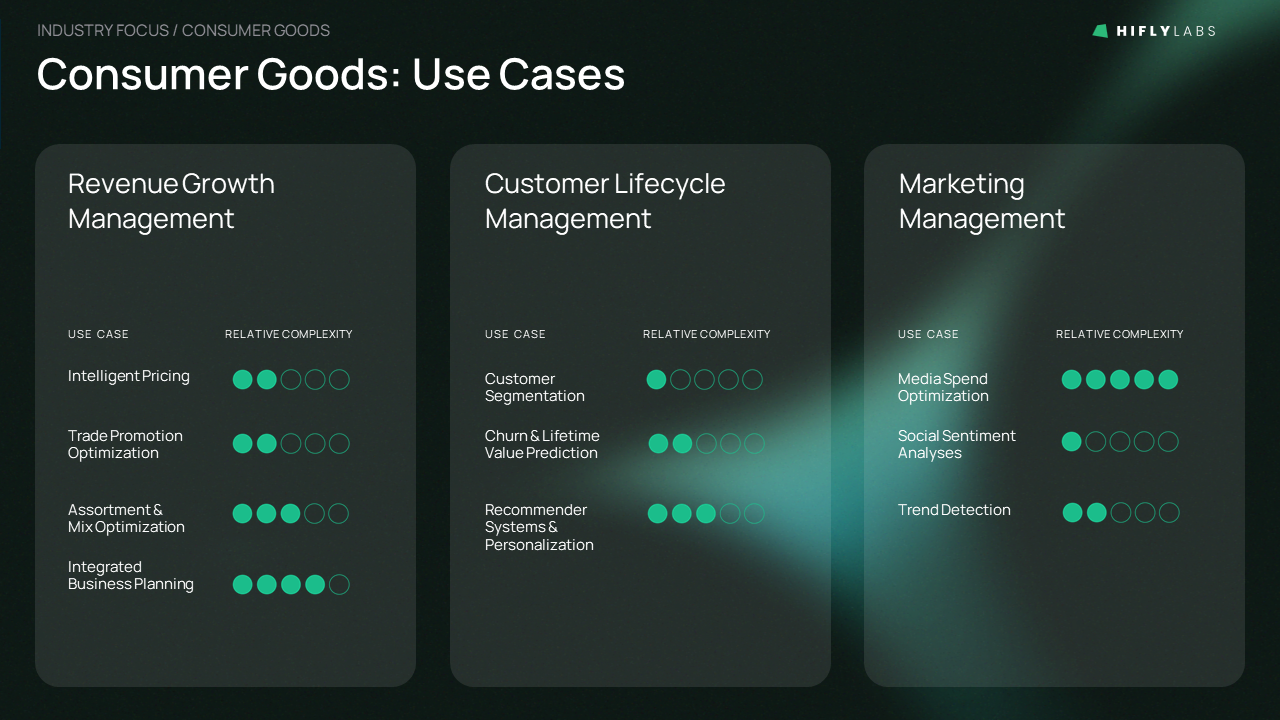
Stick The Landing
How do you know it's working? Look for early signs:
First Month: Faster decisions. Less time in spreadsheets. Fewer meetings about basic issues.
By Month Three: Better margins on key products. Lower promotion costs. More accurate forecasts.
By Month Six: Sustained growth. Lower customer churn. Higher market share.
Remember when spreadsheets replaced paper ledgers? Some thought they were too complicated. Now we can't imagine working without them. AI tools are at that same turning point. The companies that adapt now will have an unbeatable advantage.
The best time to plant a tree was 20 years ago. The second best time is now. The same goes for getting smarter with your data.
The best part?
You probably already have most of what you need to get started.
